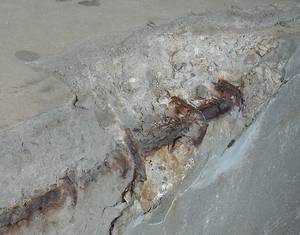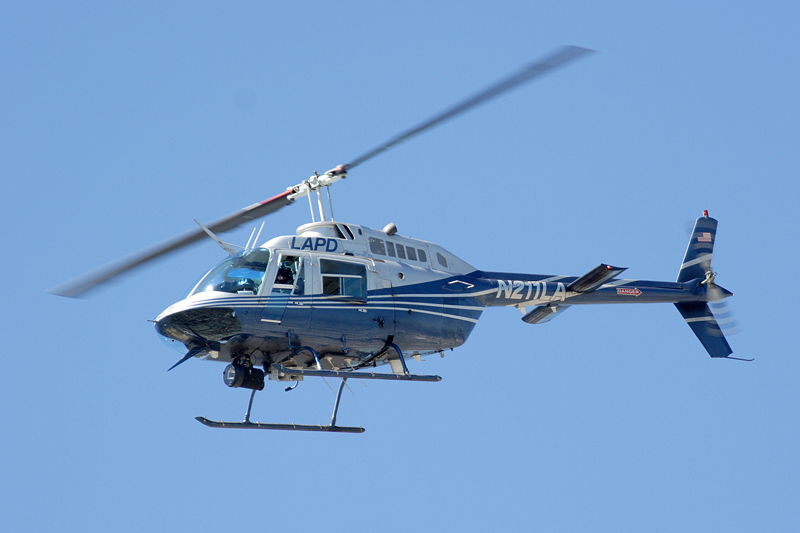Self-Aware Systems
Interview with
Chris - Professor Philip Irving joins us now. He's from Cranfield University. His colleagues have established the Centre for Integrated Vehicle Health Management, IVHM, and they're hoping to pull all these complex thread together. Hello, Phil.
Phil - Hi Chris.
Chris - Welcome to the Naked Scientists. Tell us a bit about the problems you're helping to solve. What's the big nut you're trying to crack here?
 Phil - Well, the first thing that we should say is that all machinery and all structures gradually degrade when it's put into service. It develops cracks, it wears out, starts to corrode and the way things are at the moment all these things have to be guarded against by having manual inspection. It'd be really very nice if we could get away from all this manual inspection and have something that, as you say, can look after itself, it detected when it was damaged and it heals itself. That would be really very nice.
Phil - Well, the first thing that we should say is that all machinery and all structures gradually degrade when it's put into service. It develops cracks, it wears out, starts to corrode and the way things are at the moment all these things have to be guarded against by having manual inspection. It'd be really very nice if we could get away from all this manual inspection and have something that, as you say, can look after itself, it detected when it was damaged and it heals itself. That would be really very nice.
Chris - It sounds like from what Frank was saying that we can do that.
Phil - We can but that's not the end of the story by any means. We're starting to develop these self-healing ideas for composites. We've still got to worry about traditional materials like concretes, metal, aluminium, titanium and all of these things start to develop racks eventually in service. So far, the only way in which we can cope with this is by predicting at what point the structure will decay. Preferably well before there's any danger of something catastrophic happening.
Chris - That's why Frank was saying about you and helicopter blades. If one of those goes wrong you get potentially the wind turbine effect we saw in this country that everyone blamed on aliens. It could have been structural fatigue.
Phil - That's right, yes. Helicopters in fact are one of the few examples of machinery around which has got its own damage monitoring system. It's not really a smart material because it's based on the vibrations which occur in the helicopter gear boxes. If you subject, record these vibrations and you subject them to fairly sophisticated computer analysis you can work out if there are any changes in this, whether or not damage is starting to occur and then work out what you're going to do about it. That's really the tricky thing. As well as any sort of prediction about how long it's going to be before anything catastrophic happens. That's the really tricky bit.
Chris - I want to know who it was who flew around in the helicopter long enough to find out that those are the danger signals.
 Phil - Well seriously that has been a long hard road and there have been a number of very nasty helicopter accidents in which it was previously noted that the gears were making peculiar noises just before something catastrophic happened.
Phil - Well seriously that has been a long hard road and there have been a number of very nasty helicopter accidents in which it was previously noted that the gears were making peculiar noises just before something catastrophic happened.
Chris - I guess the key is being able to anticipate what the danger signs are before they get bad enough to compromise the integrity of the material.
Phil. Yes. It would be really nice if we had a map of the whole structure in the Star Trek control cabin and there was a red light flashing on the outer wing and it as saying there was damage starting to develop there but there was still several hundred flight hours before there was a anything likely to happen that was dangerous. That's the position we really want to be in.
Chris - I did see there was quite an interesting study being done on suspension bridges that use wires that are wound into almost plaits and by putting the equivalent of a stethoscope on the wire you can hear these pinging noises which are individual strands of the wire going. This means that rather than having to open up the cable and having a look at the physical wire condition you can use sounds to work out when you're going to have to replace those cables. I guess this idea of monitoring is coming in, isn't it?
Phil - The technique you describe is called acoustic emission and is one of the very great hopes for future damage protection in structures and machinery. It's very widely researched at the moment but the difficulty is what we're alluding to a little while ago. How do you go from that initial detection of damage that's saying yes, that's going on but the bridge is ok at the moment, at what point do you need to start to contemplate putting in some sort of maintenance action. It's all to do with when and how you can actually increase your life, you can eventually increase your ability in your structure without having any sort of risk of anything catastrophic happening. That's a tricky thing.
Chris - What, at the IVHM, are you trying to do to make that easier?
Phil - We're trying to set up a centre which brings together all the various disciplines which are needed in this together. One of the most difficult areas is the fact that the vast majority of engineering structures and machinery like a helicopter or aircraft is a very complex system. I'm sure you will appreciate that diagnosing a human body, translating a symptom into information about damage and what the prognosis is, is a very difficult thing to do. It's pretty much as difficult as these complex pieces of machinery like aircraft. This is in the centre of what we're trying to do. We're trying to bring together all these different parts together to try and create effective systems which are going to detect damage in this way.
Chris - I suppose that way people find out how to anticipate the problem rather than find out the hard way.
Phil - Yes, that's absolutely right.










Comments
Add a comment